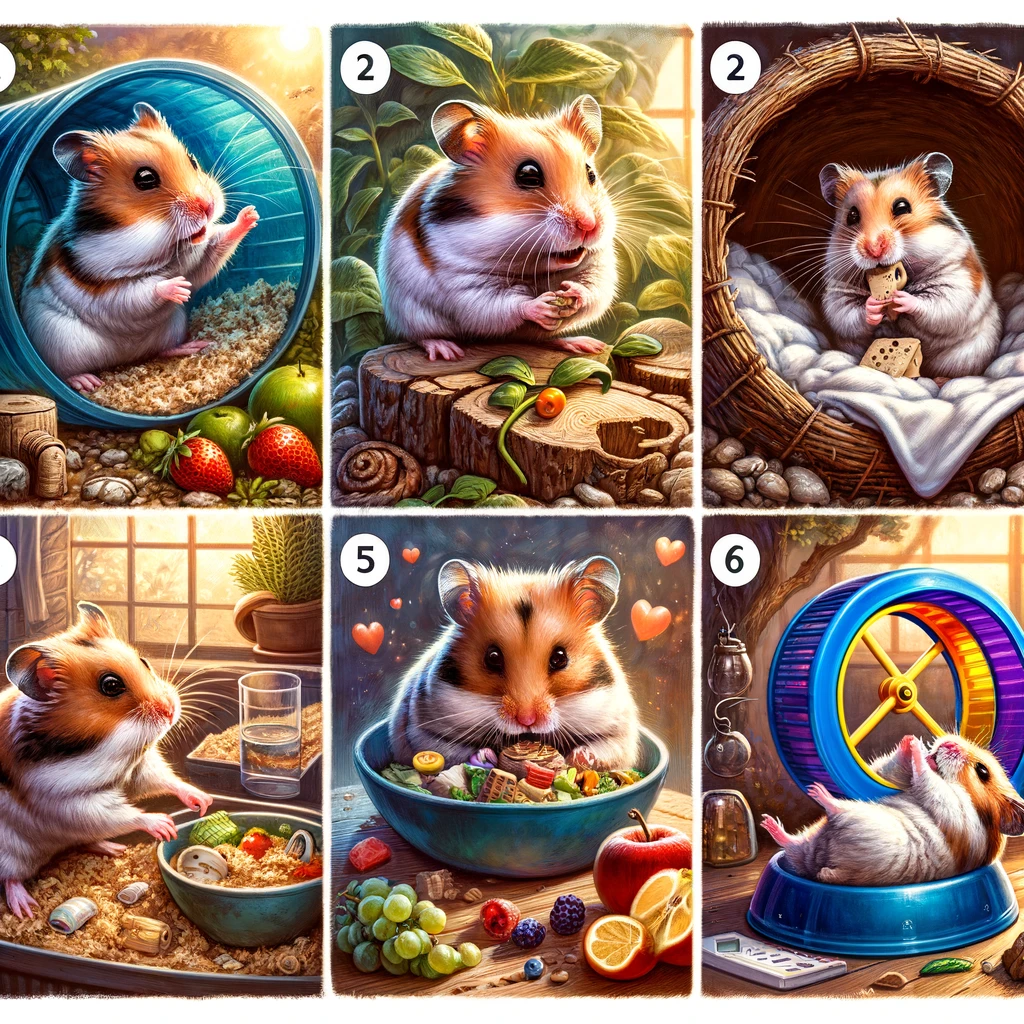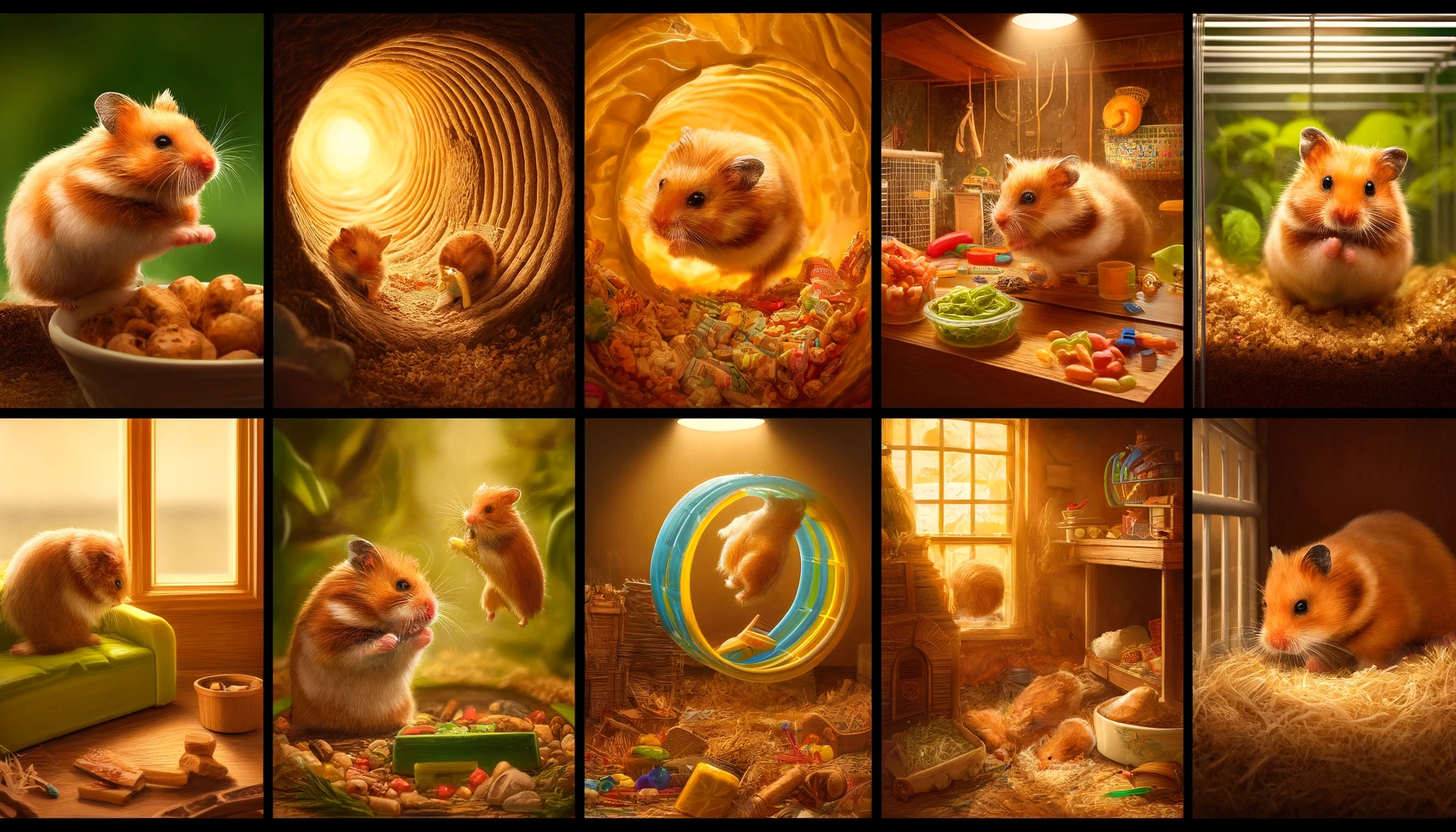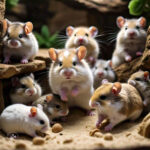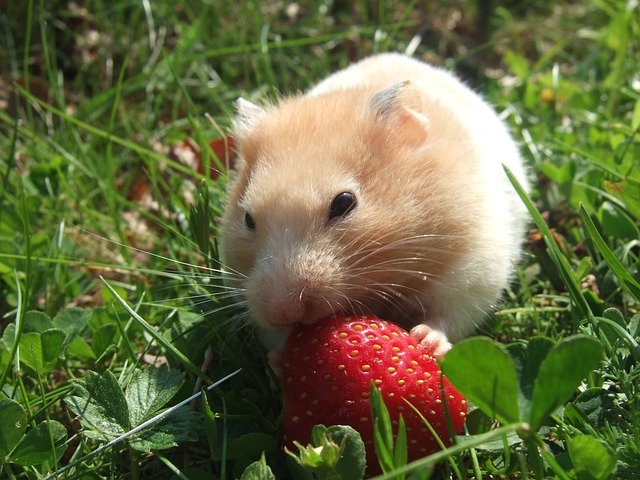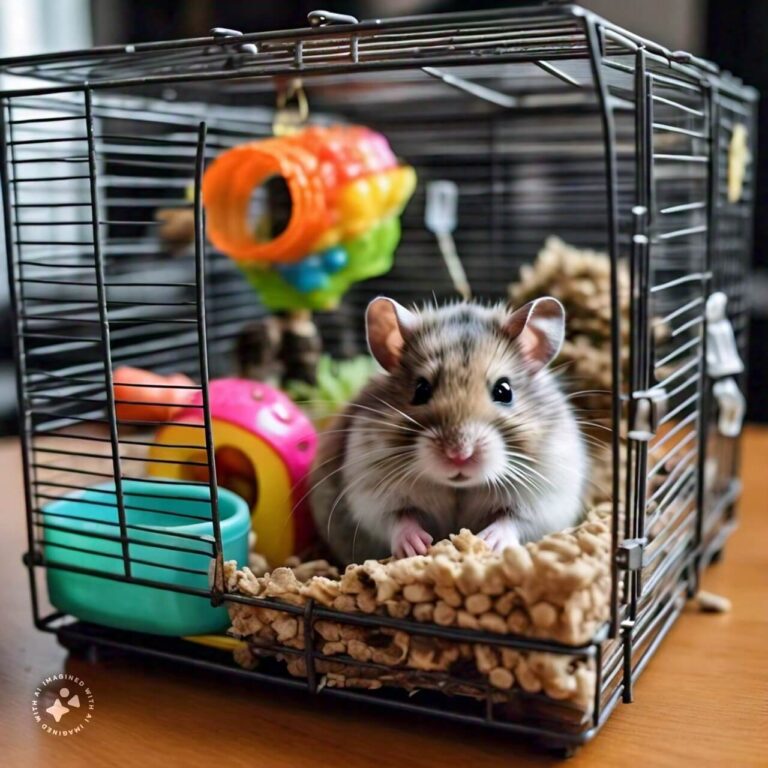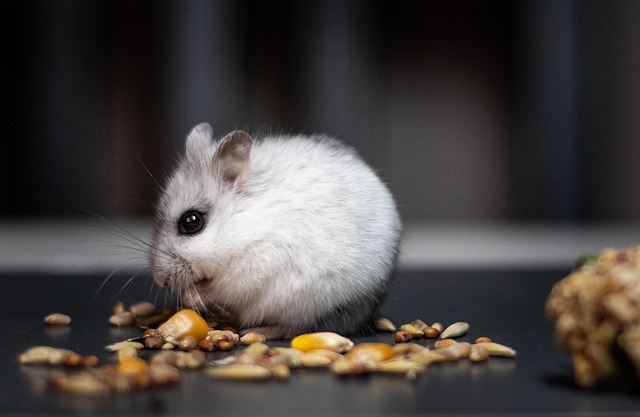Some Habits Of Hamsters – hamsters.pk
Nocturnal Activity: Exploring Hamsters’ Night-Time Routines
Hamsters are beloved pets known for their adorable appearance and charming personalities. However, many new hamster owners are surprised to discover that these tiny creatures are most active during the night. In this article, we’ll delve into the fascinating world of hamsters’ nocturnal activity and explore their night-time routines.
Understanding Hamsters’ Natural Instincts
In the wild, hamsters are prey animals, constantly at risk of being hunted by predators. To ensure their survival, they have evolved to be most active during the night when the threat of predation is lower. This natural instinct remains strong even in domesticated hamsters, leading to their nocturnal behavior.
Adapting to a Hamster’s Sleep Schedule
As hamsters are asleep for most of the day, it’s essential for owners to respect their pet’s natural sleep schedule. Disturbing a hamster during its daytime slumber can lead to stress and irritability. To ensure your hamster gets enough rest, it’s best to avoid handling them during the day and save playtime for the evening hours when they are most active.
Providing a Stimulating Night-Time Environment
To keep your hamster happy and healthy, it’s crucial to provide a stimulating environment that caters to their nocturnal nature. This includes offering a variety of toys and accessories that encourage exploration and physical activity. Running wheels, tunnels, and climbing structures are excellent options to keep your hamster entertained throughout the night.
Ensuring Proper Nutrition and Hydration
Hamsters have high metabolisms and require a steady supply of food and water to fuel their night-time activities. Provide your hamster with a balanced diet consisting of high-quality hamster food, fresh vegetables, and occasional treats. Make sure to place their food and water bowls in easily accessible locations within their cage.
Monitoring Night-Time Behavior
While hamsters are most active at night, it’s essential to monitor their behavior for any signs of distress or illness. Unusual changes in their nocturnal routines, such as lethargy or lack of appetite, may indicate an underlying health issue. Regular check-ups with a veterinarian specializing in small animals can help ensure your hamster remains healthy and happy.
Creating a Quiet and Peaceful Environment
As hamsters are active during the night, it’s important to consider their location within your home. Place their cage in a quiet room away from high-traffic areas to minimize disturbances during their active hours. If your hamster’s night-time activities are causing disruptions to your sleep, consider moving their cage to a separate room or investing in a quieter running wheel.
Conclusion
Understanding and accommodating your hamster’s nocturnal nature is essential for their well-being and happiness. By providing a stimulating environment, proper nutrition, and a peaceful space for their night-time routines, you can ensure your furry friend thrives in your care. Remember to respect your hamster’s natural sleep schedule and enjoy the special bond you share during their active evening hours.
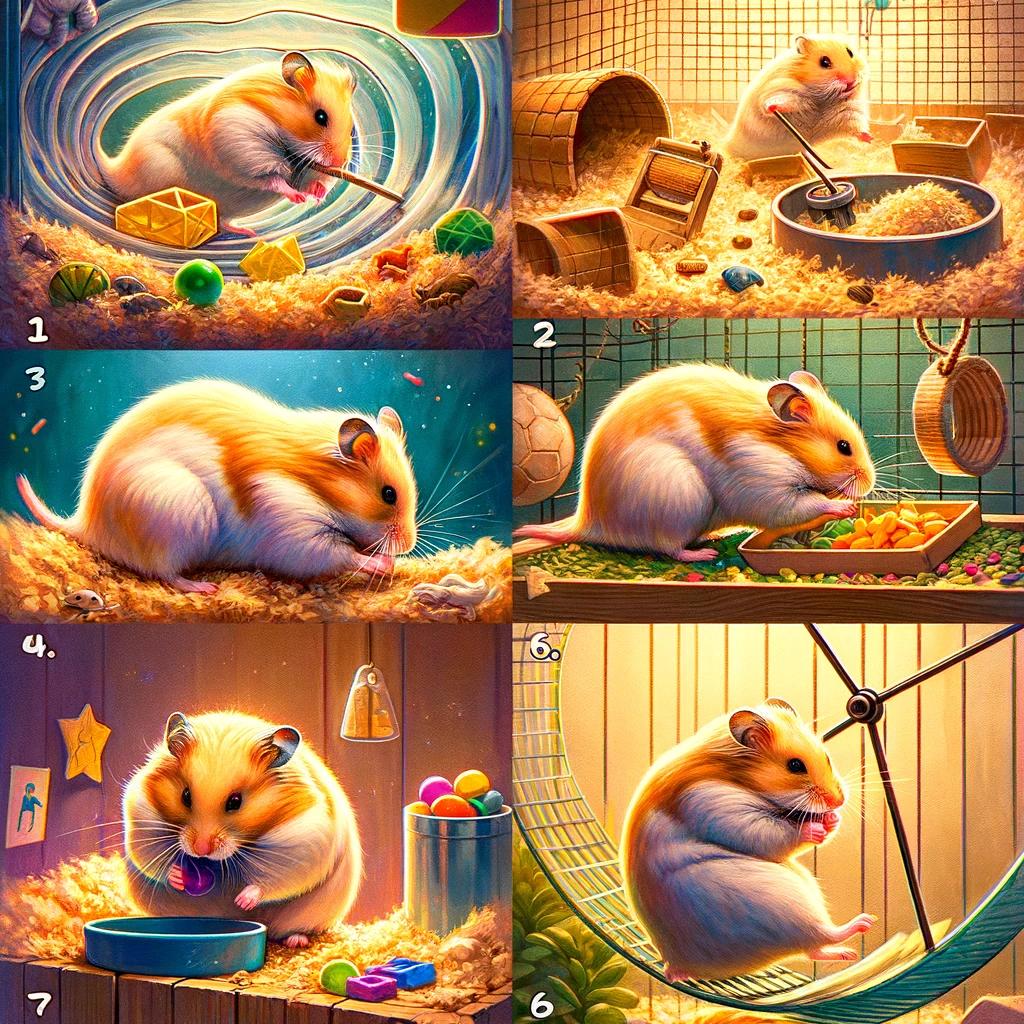
Hoarding Instincts: Understanding Hamsters’ Food Storage Behaviors
Hamsters are known for their adorable appearance and lively personalities, but one of their most fascinating behaviors is their inclination to hoard food. This article will explore the reasons behind hamsters’ food storage instincts and provide insights into how owners can manage this behavior in their pet hamsters.
The Evolutionary Basis of Hoarding
In the wild, hamsters face unpredictable food availability and harsh environmental conditions. To ensure their survival, they have evolved a strong instinct to hoard food whenever it is abundant. By storing food in their cheek pouches and hiding it in underground burrows, wild hamsters can create stockpiles to sustain them through times of scarcity.
Cheek Pouches: Nature’s Shopping Bags
One of the most remarkable adaptations of hamsters is their spacious cheek pouches. These expandable pouches allow hamsters to carry large amounts of food back to their burrows for storage. In fact, a hamster’s cheek pouches can hold up to half their body weight in food! This enables them to make fewer trips and minimize their exposure to predators while foraging.
Hoarding Behavior in Captivity
Even though pet hamsters have a constant supply of food, their natural hoarding instincts remain strong. In captivity, hamsters will often store food in various corners of their cage or hideouts. This behavior is entirely normal and should not be discouraged, as it provides mental stimulation and a sense of security for your pet.
Managing Hoarding in Pet Hamsters
While hoarding is a natural behavior, it is essential to manage it effectively to maintain your hamster’s health and well-being. Here are some tips:
- Provide appropriate hiding spots: Offer your hamster suitable hideouts or nesting areas where they can store their food stashes. This can include small boxes, tunnels, or specially designed hamster hideouts.
- Monitor food freshness: Regularly check your hamster’s food hoard for spoiled or moldy items. Remove any perishable foods that have been stored for too long to prevent your hamster from consuming them and falling ill.
- Avoid overfeeding: Provide your hamster with a balanced diet in appropriate portions. Overfeeding can lead to excessive hoarding and potential health issues such as obesity.
- Offer variety: Introduce a range of safe, hamster-friendly foods to keep your pet mentally stimulated and discourage excessive hoarding of a single food type.
The Emotional Significance of Hoarding
Beyond its practical purpose, hoarding also holds emotional significance for hamsters. Having a well-stocked food cache provides a sense of security and comfort, much like a savings account does for humans. When a hamster feels stressed or anxious, they may engage in more intense hoarding behavior as a coping mechanism.
Conclusion
Hoarding is a natural and instinctive behavior in hamsters that has evolved to ensure their survival in the wild. As pet owners, it is our responsibility to understand and accommodate this behavior while ensuring our hamsters remain healthy and happy. By providing appropriate storage spaces, monitoring food freshness, and offering a balanced diet, we can help our furry friends thrive while respecting their natural instincts.
Burrowing and Nesting: Insight into Hamsters’ Natural Habitat Preferences
Hamsters are fascinating creatures that have captured the hearts of pet owners worldwide. To truly understand these adorable rodents, it’s essential to explore their natural habitat preferences, particularly their burrowing and nesting behaviors. In this article, we’ll delve into the world of hamsters and gain insight into their innate desires to create cozy and secure spaces.
The Importance of Burrowing
In the wild, hamsters are found in arid regions, such as deserts and steppes, where they rely on their burrowing skills to create safe havens. These underground burrows serve multiple purposes, including protection from predators, temperature regulation, and food storage. Burrowing is an instinctive behavior that is deeply ingrained in a hamster’s nature, and it is crucial for their overall well-being.
Creating a Home Away from Home
Pet hamsters may not have to contend with the same challenges as their wild counterparts, but their need to burrow remains strong. As responsible pet owners, it’s our duty to provide them with a suitable environment that allows them to express this natural behavior. This can be achieved by offering a deep layer of bedding material, such as wood shavings or paper-based substrates, in which your hamster can dig and tunnel to their heart’s content.
The Art of Nesting
In addition to burrowing, hamsters are also skilled nest builders. They have a keen eye for gathering soft, plush materials to create cozy and comfortable sleeping quarters. In the wild, hamsters may use various materials like dried grass, leaves, and even their own fur to construct their nests. These nests provide insulation, warmth, and a sense of security, making them essential for a hamster’s overall comfort.
Replicating Natural Nesting Materials
To encourage natural nesting behaviors in pet hamsters, it’s important to provide them with appropriate nesting materials. Soft paper-based bedding, such as unscented toilet paper or facial tissues, can be excellent choices. You can also offer your hamster small pieces of safe, untreated wood, like apple or willow twigs, which they can gnaw on and use to build their nests. Avoid using materials with long fibers, such as cotton or wool, as these can pose a risk of entanglement or ingestion.
Providing Suitable Habitat Accessories
In addition to bedding and nesting materials, it’s essential to furnish your hamster’s cage with accessories that cater to their burrowing and nesting instincts. Hamster hideouts, such as ceramic or wooden houses, provide a secure space for your pet to retreat to when they feel the need for privacy. Tunnels and tubes made from safe materials can also encourage exploration and satisfy your hamster’s desire to burrow.
Respecting Your Hamster’s Private Spaces
Once your hamster has established their burrows and nests, it’s crucial to respect their privacy. Avoid disturbing these areas unnecessarily, as doing so can cause stress and anxiety for your pet. When cleaning the cage, try to maintain some of the existing burrows and nests to provide a sense of familiarity and security for your hamster.
Conclusion
Understanding and catering to your hamster’s natural burrowing and nesting preferences is essential for their physical and emotional well-being. By providing a suitable environment with appropriate bedding, nesting materials, and habitat accessories, you can create a home that allows your hamster to express their instinctive behaviors. Remember to respect your pet’s private spaces and watch them thrive as they engage in the fascinating activities of burrowing and nesting.
Social Dynamics: Examining Hamsters’ Interactions with Their Own Kind
Hamsters are often perceived as solitary animals, but their social dynamics are more complex than many people realize. While some species of hamsters are indeed more solitary by nature, others exhibit fascinating social behaviors and interactions with their own kind. In this article, we’ll explore the various aspects of hamster social dynamics and gain a deeper understanding of these adorable rodents.
Solitary Species: Syrian Hamsters
Syrian hamsters, also known as golden hamsters, are the most common species kept as pets. In the wild, these hamsters are solitary and territorial animals. They typically only come together for mating purposes and then go their separate ways. In captivity, Syrian hamsters should be housed individually to prevent fighting and potential injuries, as their territorial nature remains strong.
Social Species: Dwarf Hamsters
In contrast to Syrian hamsters, dwarf hamster species, such as Campbell’s dwarf hamsters and winter white dwarf hamsters, are more social by nature. In the wild, these hamsters often live in small family groups consisting of a mated pair and their offspring. They engage in various social behaviors, such as grooming each other and huddling together for warmth and comfort.
Housing Social Hamsters
When keeping dwarf hamsters as pets, it’s essential to understand their social needs. These hamsters can be housed together in same-sex pairs or small groups, provided they are introduced at a young age and have enough space and resources to avoid conflicts. However, it’s crucial to monitor their interactions closely and separate them if any signs of aggression or bullying occur.
Establishing Dominance Hierarchies
In social hamster groups, dominance hierarchies often form. These hierarchies help maintain order and minimize conflicts within the group. Dominant individuals may assert their status through various behaviors, such as scent marking, food hoarding, and claiming the best nesting spots. Subordinate hamsters may defer to the dominant individuals by yielding space or resources to avoid confrontations.
Communication and Scent Marking
Hamsters communicate with each other through a variety of means, including vocalizations, body language, and scent marking. They have scent glands located on various parts of their bodies, which they use to mark their territory and communicate with other hamsters. These scent markings convey important information about the individual’s identity, reproductive status, and social rank within the group.
Socialization and Bonding
While hamsters may not bond with their owners in the same way as dogs or cats, they can still form social connections with their cage mates. Social hamsters often engage in behaviors such as grooming each other, sleeping together in a shared nest, and even playfully chasing one another. These interactions help strengthen their social bonds and contribute to their overall well-being.
Mating and Reproduction
When it comes to mating and reproduction, hamsters have specific social dynamics. In the wild, hamsters typically mate during specific breeding seasons, which vary depending on the species and environmental conditions. Male hamsters may compete for access to females, engaging in displays of dominance or even physical confrontations. Once a successful mating occurs, the female will typically rear her litter alone, as paternal care is uncommon among hamsters.
Conclusion
Understanding the social dynamics of hamsters is essential for providing them with the appropriate care and living arrangements. While Syrian hamsters are solitary by nature and should be housed alone, dwarf hamsters can thrive in same-sex pairs or small groups when introduced at a young age. By recognizing the unique social needs of different hamster species and providing them with suitable environments and companionship, we can ensure their physical and emotional well-being in captivity.
